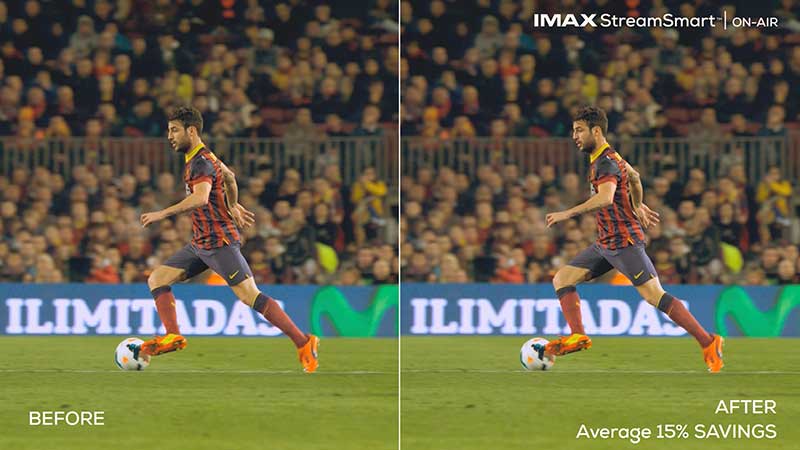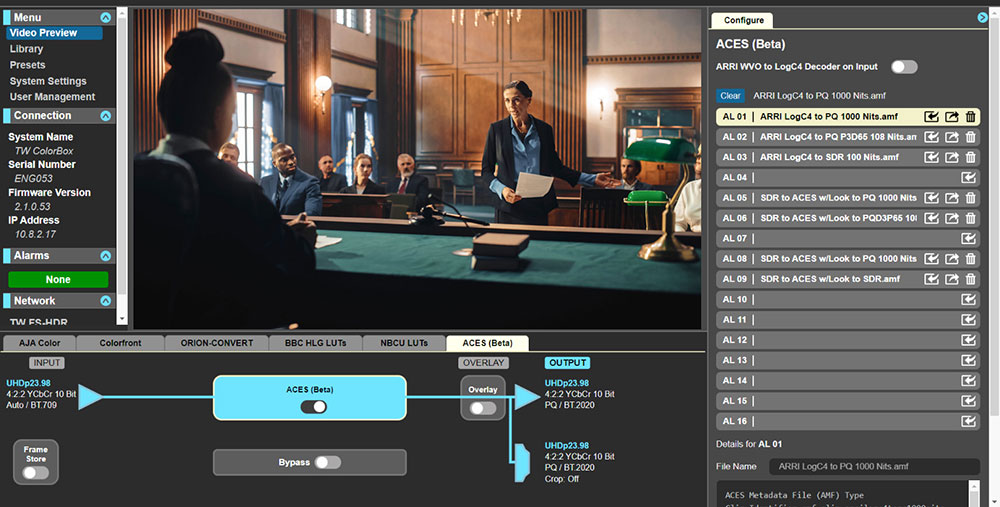StreamSmart On-Air uses IMAX’s VisionScience image processing algorithm to preserve the video quality of live content as far as possible, while reducing file sizes dynamically.

IMAX showed a new version of its StreamSmart enterprise software for live and linear distribution workflows at NAB 2024. Called StreamSmart On-Air, it uses IMAX’s VisionScience image processing algorithm to preserve the video quality of live content as far as possible, while reducing file sizes beyond the ability of existing optimisation methods.
IMAX VisionScience maps the human visual system comprehensively, producing an accurate, detailed measure of perceptual quality that results in a single score, the IMAX ViewerScore (XVS). It achieves a high correlation to audience perception, which IMAX measures with a Mean Opinion Score.
The XVS system can detect quality discrepancies and inconsistencies that earlier on could not be perceived, and works both with and without reference images. It is also able to gauge a wide range of content characteristics and types including complexity – even scene-by-scene variation, frame rate, resolution and dynamic range – HDR or SDR. The system is compatible with diverse codecs including AVC, HEVC and AV1, and devices from mobile to large, high resolution TV screens.
The Human Perspective
Equally important, VisionScience makes it possible to engineer software to see pixels as people see them, such as noticing where our eyes focus, to give a human perspective. IMAX software illuminates and maps human attention, on the understanding that the brighter the image area, the more likely it is to indicate where people focus. For humans, recognising and identifying degradation is immediate. IMAX software also identifies and maps degradation like humans – that is, the darker the area, the greater the degradation is assumed to be.

The VisionScience algorithm precisely determines how far bitrate can be reduced without compromising quality, and also understands that humans perceive changes in quality in stages, forming zones across an image where quality loss goes unnoticed. Knowing this in advance creates an opportunity to decrease bits in a way that doesn't affect the user experience. As compression increases and bandwidth decreases, the viewer’s experience remains consistent, and the operator can optimise file size with a higher level of certainty.
IMAX StreamSmart | on-air software optimises bitrate dynamically and can use the existing encoding and packaging workflow and optimisation methods, limiting disruption and cost. Because it manipulates, or edits, the manifest it can remain codec, encoder and configuration agnostic. Further savings for operators come through automation, and operating in on-premises, private or public cloud environments. Above all, the cost of CDN distribution can be lowered and the video quality prioritised by reducing the bitrate only when the quality remains indistinguishable.
Monitoring and QA/QC
IMAX has also released a new version of its StreamAware On-Demand software, featuring a new content similarity check that automates the comparison of two video files to determine if their content is identical and identifies the mismatch if they differ. A combined quality assurance and quality control tool that monitors streaming quality and file integrity, the software automates and standardises checks for content integrity and regulatory compliance for entire libraries, over the entire operator workflow.
A new platform, IMAX Stream, will be available soon that combines the StreamAware On-Demand and StreamSmart On-Demand applications, both of which use the data-driven optimisation features of IMAX VisionScience.
While StreamAware performs quality measurement with quality and compliance checks, StreamSmart focusses on encoding – it dynamically adjusts the user’s encoder to match the expectations of human eyes and determines exactly how low bitrates can be set for each device. Again, because it augments existing encoder workflows, it incurs minimal compute costs while adhering to existing encoding workflows. www.imax.com




















